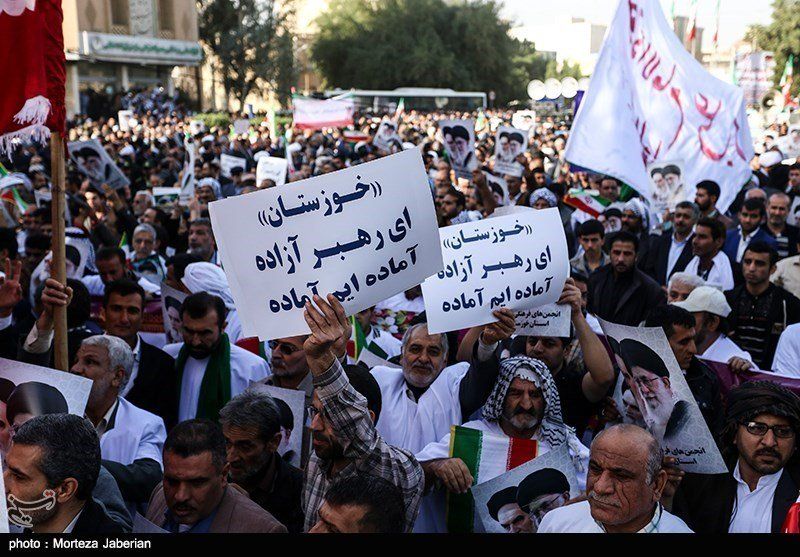Iran’s regime, trying to overcome a week of protests across the nation, held rallies on Wednesday and promised more for today and Friday.
State TV featured images of crowds in Ahvaz, Kermanshah, Bushehr, Abadan, Gorgan, and Qom yesterday in a display trying to counter demonstrations over political and economic issues that — in contrast to the mass protests in 2009 after the disputed Presidential election — have been spread across the country rather than concentrated in Tehran.
Today the pro-regime events are in Mashhad, Isfahan, Shiraz, Rasht, Yasoij, Ardabil, and Urmia. Tehran’s gathering will be after Friday prayers.
The regime initally tried a counter-rally last weekend — ironically, the eighth anniversary of its mass march to push aside the challenge of the Green Movement —but failed to get more than a few thousand people in Tehran and smaller gatherings elsewhere. Wednesday’s attempt appeared to be far more successful.
At the same time, in a notable contrast to 2009, some State media — probably reflecting the approach of the Rouhani Government — are playing up the initial validity of “peaceful protests” over economic issues while emphasizing that these were “overshadowed when armed elements and vandals showed up among ordinary protesters and began to launch attacks on public property, police stations and religious sites”.
The Intelligence Ministry declared that “terrorist cell missioned to provoke more unrests” had been broken up and its members arrested.
The protests, which escalated last Thursday in Iran’s second city Mashhad and soon spread to almost all Iranian cities, were less visible yesterday. There were reports from fewer towns and cities, and gatherings appeared to be small. A journalist in Tehran said, “Last night, there were dozens of anti-riot forces at the nearby square, now there are less than 10. Traffic looks normal.”
Revolutionary Guards commander Gen. Mohammad Ali Jafari declared an end to the protests and said that the “ringleaders of sedition” were quickly captured.
However, in a sign of fallout from the week’s event, Jafari appeared to blame former President Mahmoud Ahmadinejad and his followers for the demonstrations. He said trouble had begun “with the invitation of a website tied to an individual who has been speaking about opposing the principles and values of the system these days”.
Jafari also implicitly chided the Government, saying the trouble had been compounded when officials had “lost control of cyberspace”.
It is widely believed that the initial protests in Mashhad were by hardliners, but that a far wider range of people and groups expanded the demonstrations.
Some Iranian officials have pointed at a link between Ahmadinejad, who is in a bitter battle with the Iranian judiciary, and conservative cleric Ebrahim Raisi, a Presidential candidate in 2017 who heads Iran’s largest religious foundation. Reports have also claimed that Ayatollah Alamolhoda, the well-known Friday Prayer Leader of Mashhad, has been summoned and rebuked for his role in the initial wave of protests.
Accusing the US
Meanwhile, the regime tried to turn attention to the US as the instigator of protests, writing to the UN Secretary General that the Trump Administration “flouted” international law and the principles of the UN Charter by supporting the unrest with “absurd tweets”.
Gholamali Khoshroo, Iran’s ambassador to the UN, said the US had “crossed every limit” by “inciting Iranians to engage in disruptive acts”:
“[The US] has stepped up its acts of intervention in a grotesque way in Iran’s internal affairs under the pretext of providing support for sporadic protests, which in several instances were hijacked by infiltrators.”
=

